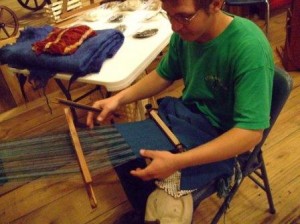When most of us look at a butterfly, we don’t see a cunning and defensive work of nature but they are. Yes, butterflies are beautiful and fragile but Mother Nature armed them with special defenses against predators. The kind of defense depends on the butterfly, but there are basically four main types.
Eye Spots
Many butterflies use eye spots, like peacocks, for defense. The spots are a common form of defense that use a pattern on the top, underneath, or both sides or their front and back wings. Some butterfly species have two large eye spots on their rear wings. When a predator approaches, the butterfly will suddenly show its eye spots and frighten the would-be attacker away. Other butterflies only have small eye spots. The spots are usually positioned on the edge of the wings. These spots are used more to puzzle the predator and cause the animal to attack the eye spot. If the butterfly is attacked, it can still fly away with minimal loss. Swallowtail butterflies, and other species like them, take eye spots to another level. These butterflies have tails on their hind wings with their eye spots. Predators confuse this combo as an antenna and eyes and can’t predict the direction that the butterfly will move.
 Bad Taste
Bad Taste
Some butterflies are poisonous or foul-tasting. Bright colors usually warn a predator that a butterfly is bad-tasting. A predator, having suffered the results of consuming a toxic or foul-tasting butterfly, will have no problem remembering the bright colors. The animal will learn to avoid that color pattern.
Mimicry
The Viceroy butterfly has markings almost identical to the Monarch butterfly. Being tasty is not a good thing for a butterfly and because of this many species use mimicry. This is a handy defense for butterflies who are tasty and brightly-colored. Their color patterns have evolved to appear like some of their foul-tasting relatives. A good example is the brightly-colored Viceroy whose orange and black pattern is extremely similar to the toxic Monarch. Any predator that survived a Monarch the first time would never again eat something orange and black
butterfly and because of this many species use mimicry. This is a handy defense for butterflies who are tasty and brightly-colored. Their color patterns have evolved to appear like some of their foul-tasting relatives. A good example is the brightly-colored Viceroy whose orange and black pattern is extremely similar to the toxic Monarch. Any predator that survived a Monarch the first time would never again eat something orange and black
 Camouflage
Camouflage
Most butterflies and moths protect themselves from predators by using camouflage. Some blend into their environment so well that is it almost impossible to spot them when they are resting on a branch. A very good example of this is the Indian Leaf butterfly who looks like a dead leaf. Many, like the Carpenter moth, look like tree bark.
While butterflies may be fragile, they are not without their own protection. Nature has a way of defending even the most delicate looking creatures.































